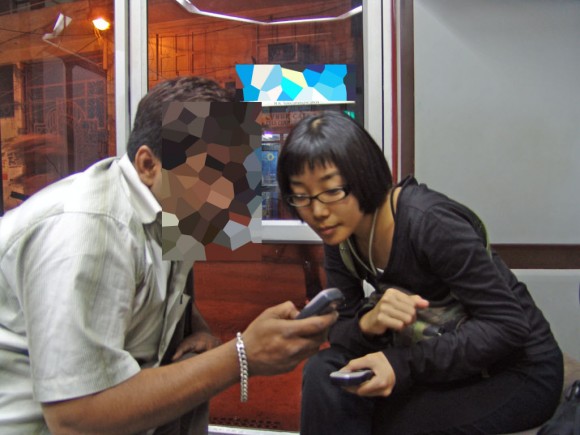What motivates people to adopt new technologies and features?
Back in March, I had the pleasure of walking around Old Delhi with a friend and colleague also working in the field of user experience. I guess we were trying to get a sense of the place and basically following our noses not really minding where we were going. At one point we passed a print shop with a rather beautiful printing press churning out posters. Next to this shop was an office, and as we walked passed the glass fronted window the guys inside beckoned us inside. Two guys were hunched around a mobile phone (a 6600 as it happened) looking and laughing at the screen, whilst 3 other guys were just hanging out. This was a family business, and these were the family.
It’s not uncommon in South East Asia to be beckoned to sit down, invited for a chai and hang out. Their motivation in inviting us in however appeared primarily to show us a movie that was playing on one of the mobile phones. Younghee and my Hindi is non-existent and these gentlemen spoke next to no English so communication was body and sign language and a smattering of words. They had no way of knowing we worked for a handset manufacturer, as far as they were concerned we were just to foreigners walking by.
The movie itself was made famous by the fact that it was shot on a mobile phone (no, I have no idea which model) and eventually distributed as an auction item though Bazzee.com. Baazee is owned by EBay and recently renamed eBay.in. This distribution culminated in the arrest of Avnish Bajaj CEO of Bazzee.com on the grounds of peddling adult content.
The movie was in the public domain and had gone viral – presumably passing from phone to phone – each new recipient sufficiently motivated by the desire to have a copy of the file to overcome the hurdle of pairing Bluetooth devices and going through the still-not-yet-that-easy data transfer process.

Whilst it may be possible to arrest the CEO of a high profile auction site, it is not practical intercept this content passing from phone to phone. The real power to make decisions on whether content is suitable for consumption is shifting to the individual. P2P networks are I presume to a large extent trackable. Interactions directly between devices are much less so.
